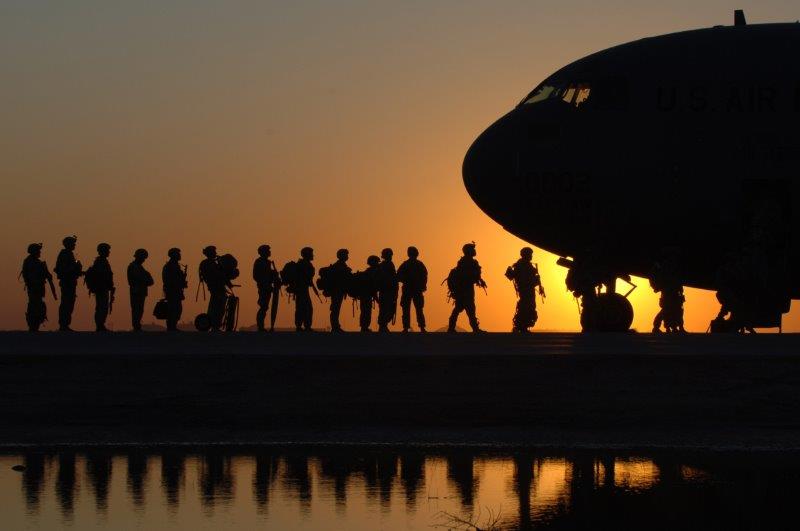So, can you join the military with scoliosis? If you have scoliosis and are interested in joining the military, it is crucial to understand the policies of different military branches and the implications of your medical condition. Scoliosis is a sideways curvature of the spine that can affect individuals of any age, but it most commonly occurs in teenagers before puberty. Each military branch treats scoliosis differently, so it is best to consult with the policy of the specific branch with additional questions if you are interested in before enlisting.
In general, the military accepts individuals with mild scoliosis, with a curvature within an acceptable range based on the Cobb Method. However, the military will assess if the condition impairs the individual's ability to perform essential duties or wear a uniform and equipment properly. Severe cases of scoliosis may be disqualifying, and each branch evaluates spinal conditions on a case-by-case basis.
The Army, Navy, Air Force, Marines, and Coast Guard have their own specific policies regarding scoliosis, so it is advisable to consult with a recruiter from the branch you are interested in for more information when considering a career to serve in the military.
Key Takeaways:
- Each military branch has its own policies regarding scoliosis, so it is important to understand the specific requirements of the branch you are interested in.
- Mild scoliosis within an acceptable range may not be disqualifying, but severe cases may affect eligibility.
- Essential duties and the ability to wear a uniform and equipment properly are taken into consideration in the evaluation process.
- Consulting with a recruiter from the branch you are interested in is essential to get accurate and up-to-date information.
- Understanding the implications of your medical condition is essential before making a decision about joining the military.
Can You Join the Military with Scoliosis? What You Need to Know
When it comes to scoliosis and military service, it is important to understand that each military branch treats the condition differently and evaluates it on a case-by-case basis. While having scoliosis may not automatically disqualify individuals from joining the military, the severity of the condition and its impact on an individual's physical abilities are crucial factors considered during the medical evaluation process.
The military generally accepts individuals with mild scoliosis, where the curvature falls within an acceptable range determined by the Cobb Method. However, even individuals within this range may be subject to further assessment to determine if their condition impairs their ability to perform essential duties, such as carrying out physical tasks or wearing a military uniform and equipment properly as factors that include long term health and well being of the soldier must be considered.
Severe cases of scoliosis are more likely to lead to disqualification, as they can significantly limit an individual's physical capabilities and increase the risk of further complications. It is important to note that each branch of the military has its own specific policies regarding scoliosis, which may further influence the assessment process. Therefore, it is advisable to consult with a recruiter from the branch you are interested in to get detailed information on their scoliosis policy.
| Military Branch | Scoliosis Policy |
|---|---|
| Army | May consider individuals with mild scoliosis on a case-by-case basis, but severe cases are usually disqualifying. |
| Navy | Considers scoliosis on a case-by-case basis, with greater leniency for minor curvatures. |
| Air Force | Takes scoliosis into account during the medical evaluation and considers the impact on physical abilities. |
| Marines | Assesses scoliosis on an individual basis, with the focus on the ability to perform essential duties. |
| Coast Guard | Evaluates scoliosis on a case-by-case basis, considering the severity and impact on physical capabilities. |
Understanding the scoliosis policies of each military branch is crucial for individuals with scoliosis who are interested in joining the military. It is essential to communicate openly with recruiters, who can provide the most up-to-date information and guidance based on the specific branch's policies. By doing so, individuals can make informed decisions about their eligibility and pursue the appropriate course of action to achieve their military aspirations.
Joining the Military with Scoliosis: Eligibility Criteria and Implications
Individuals with mild scoliosis may be eligible to join the military, provided their curvature falls within an acceptable range and does not impair their ability to perform essential duties or wear a uniform and equipment properly. Scoliosis is a condition characterized by a sideways curvature of the spine, which can affect individuals of any age but is most commonly seen in teenagers before puberty. It is important to note that each military branch evaluates scoliosis on a case-by-case basis, and their policies may differ.
When considering military service with scoliosis, it is crucial to understand the medical standards set by the specific branch you are interested in. The military accepts individuals with mild scoliosis, but the curvature must be within an acceptable range determined by the Cobb Method. This method measures the angle of the curvature and helps determine the severity of the condition. If the curvature exceeds the military's accepted range, it may potentially disqualify an applicant from service.
Furthermore, the military will assess how scoliosis may impact an individual's ability to carry out essential duties and wear a military uniform and equipment correctly. The nature of military jobs often requires physical exertion, and if scoliosis hampers an individual's ability to meet these demands, it could affect their eligibility. The severity of the scoliosis and its impact on an individual's daily functioning play a significant role in the evaluation process.

| Mild Scoliosis | Severe Scoliosis |
|---|---|
| Scoliosis curvature falls within the acceptable range determined by the Cobb Method. | Scoliosis curvature exceeds the acceptable range and may result in disqualification. |
| Ability to perform essential duties and wear a uniform and equipment properly is not impaired. | Ability to perform essential duties and wear a uniform and equipment properly may be significantly impacted. |
If you are considering joining the military with scoliosis, it is essential to consult with a recruiter from the specific branch you are interested in. They can provide detailed information about their scoliosis policies, medical evaluations, and any disqualifications related to the condition. Remember to be open and honest about your medical history during the recruitment process to ensure accurate assessment and guidance.
Specific Branch Policies: Army, Navy, Air Force, Marines, Coast Guard
The Army, Navy, Air Force, Marines, and Coast Guard have their own specific policies regarding scoliosis and potential disqualifications, making it imperative to consult with a recruiter from the branch you are interested in. While each branch evaluates scoliosis on a case-by-case basis, there are general guidelines to consider.

Army
The Army welcomes individuals with mild scoliosis, as long as the curvature does not exceed 30 degrees. However, if scoliosis prevents an individual from completing basic training, it may be disqualifying. Medical evaluations assess the impact of scoliosis on the ability to perform essential duties and wear a military uniform or equipment properly.
Navy
The Navy also considers scoliosis on a case-by-case basis. Mild scoliosis, with a curvature below 20 degrees, is generally accepted. However, moderate to severe cases may be disqualifying. Medical history, current symptoms, and the ability to meet physical performance standards are factors evaluated during the medical examination.
Air Force
The Air Force accepts individuals with mild scoliosis, as long as the curvature is below 40 degrees. However, severe spinal curvature may be disqualifying. The Air Force considers various factors, such as the individual's ability to perform essential duties and any limitations related to scoliosis.
Marines
The Marines follow strict guidelines when it comes to scoliosis. Mild scoliosis, with a curvature below 20 degrees, is generally accepted. However, the Marines may disqualify individuals with more severe cases. The medical evaluation takes into account the ability to perform essential duties and the impact of scoliosis on physical fitness.
Coast Guard
The Coast Guard evaluates scoliosis on a case-by-case basis. Mild scoliosis may be accepted if the curvature is below 20 degrees and does not cause any limitations in duty performance. Moderate to severe cases may be disqualifying, as it could hinder the ability to perform essential duties and wear a uniform properly.
Consulting with a recruiter from the specific branch of interest is key to understanding the individual policies and potential disqualifications related to scoliosis. Recruiters can provide the most up-to-date information and guidance based on each branch's requirements.
| Branch | Accepted Curvature | Disqualification Criteria |
|---|---|---|
| Army | Below 30 degrees | Prevents completion of basic training |
| Navy | Below 20 degrees | Moderate to severe cases, inability to meet physical performance standards |
| Air Force | Below 40 degrees | Severe cases impacting essential duties |
| Marines | Below 20 degrees | Moderate to severe cases impacting physical fitness |
| Coast Guard | Below 20 degrees | Moderate to severe cases impacting duty performance and uniform fit |
Conclusion: Wrapping Up a Scoliosis Disqualification
In conclusion, individuals with scoliosis who aspire to join the military should consult the policy of the specific branch they are interested in, ensure they meet the necessary eligibility criteria, and maintain open communication with recruiters to explore their options. Scoliosis, a sideways curvature of the spine, can vary in severity and impact each individual differently. Therefore, it is crucial to understand how different military branches approach scoliosis before enlisting.
Did You Know: According to data from the Department of Defense Medical Examination Review Board, scoliosis was among the top 5 most common disqualifying medical conditions for potential military recruits in recent years. Specifically, in 2018, scoliosis accounted for 3.3% of all medical disqualifications from the Army, behind only mental health issues and asthma/reactive airway disease. This highlights that scoliosis, even in mild forms, remains one of the leading medical factors that precludes individuals from military service.
Generally, the military accepts individuals with mild scoliosis, as long as their curvature falls within an acceptable range determined by the Cobb Method. However, the military evaluates scoliosis on a case-by-case basis to determine if it hinders an individual's ability to perform essential duties or wear a military uniform and equipment properly. Severe cases of scoliosis may be disqualifying, as they can pose significant challenges.
It is important to note that each military branch has its own specific policies regarding scoliosis. The Army, Navy, Air Force, Marines, and Coast Guard may have different standards and disqualifications related to scoliosis. Therefore, it is advisable to reach out to a recruiter from the specific branch of interest to gather detailed information and guidance.
By consulting the policy, understanding the medical condition, meeting the necessary eligibility criteria, and maintaining open communication with recruiters, individuals with scoliosis can make informed decisions about whether joining the military is the right path for them. While scoliosis may present challenges, it does not necessarily disqualify individuals from military service. Explore your options, seek appropriate guidance, and make the best decision for your future.
FAQ
Can I join the military with scoliosis?
Each military branch treats scoliosis differently, so it is best to consult with the policy of the specific branch you are interested in before enlisting.
What is scoliosis?
Scoliosis is a sideways curvature of the spine that can affect individuals of any age, but it most commonly occurs in teenagers before puberty.
What is the accepted range of curvature for mild scoliosis?
The military generally accepts individuals with mild scoliosis, with a curvature within an acceptable range based on the Cobb Method.
How does the military evaluate spinal conditions?
The military will assess if scoliosis impairs an individual's ability to perform essential duties or wear a uniform and equipment properly. Severe cases of scoliosis may be disqualifying, and each branch evaluates spinal conditions on a case-by-case basis.
What are the specific policies of each military branch regarding scoliosis?
The Army, Navy, Air Force, Marines, and Coast Guard have their own specific policies regarding scoliosis. It is advisable to consult with a recruiter from the branch you are interested in for more information.
Can I still join if I have kyphosis and lordosis outside normal alignment?
A: Excessive kyphosis and lordosis outside normal alignment may impact your eligibility. Each case receives individual assessment, but significant postural abnormalities could impede your ability to perform duties. Providing medical records is key. For mild cases, waivers are possible. Discuss your specific diagnosis with a recruiter.
What if my scoliosis exceeds 30 degrees after skeletal maturity?
Scoliosis greater than 30 degrees after skeletal maturity presents challenges for joining. However, waivers are possible in some cases, especially if you can demonstrate the ability to function fully. Documentation of stability and a thorough evaluation at MEPS are required. Work closely with your recruiter and CMO for the best chance.
What if I have thoracic scoliosis greater than 30 degrees?
If you have thoracic scoliosis exceeding 30 degrees, it may be challenging to join the military. Most branches have thresholds of 20-40 degrees for thoracic curvature before considering it disqualifying. With thoracic scoliosis greater than 30, it is best to consult your recruiter and request a waiver. Provide all documentation related to your diagnosis and treatment to support your waiver request.
If I was diagnosed with scoliosis years ago but have no current symptoms, can I still join the Marines?
You may still be able to join the Marines if you were diagnosed with scoliosis in the past but no longer have symptoms or limitations. The Marine Corps evaluates scoliosis on a case-by-case basis, focusing on your current condition. Provide documentation that your scoliosis is mild or stabilized. Consult with your local Marine recruiter and be evaluated at MEPS (military entrance processing station) to determine your eligibility.
My scoliosis waiver request was denied by the Air Force. What are my options for appealing?
If the Air Force denied your scoliosis waiver request, you may be able to appeal to the Chief Medical Officer and Department of Defense. Submit additional medical evidence about the stability of your condition and your ability to perform duties. Letters from your doctors may also help. Work closely with your local Air Force recruiter and be persistent if you wish to serve. Waiver policies can change, so keep trying if this is your goal.











